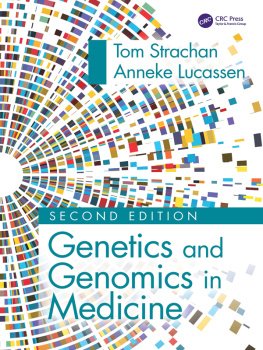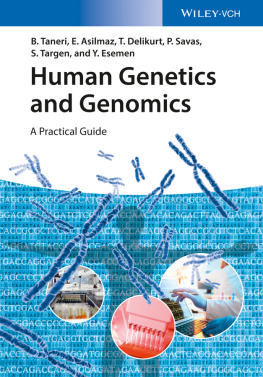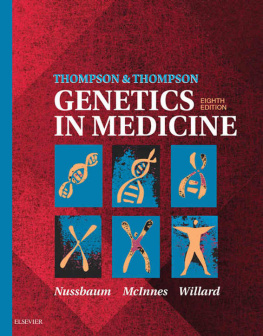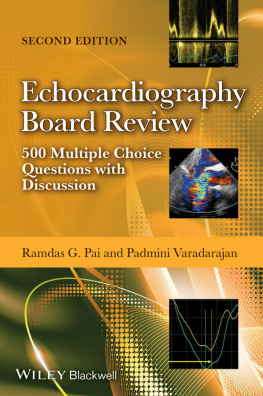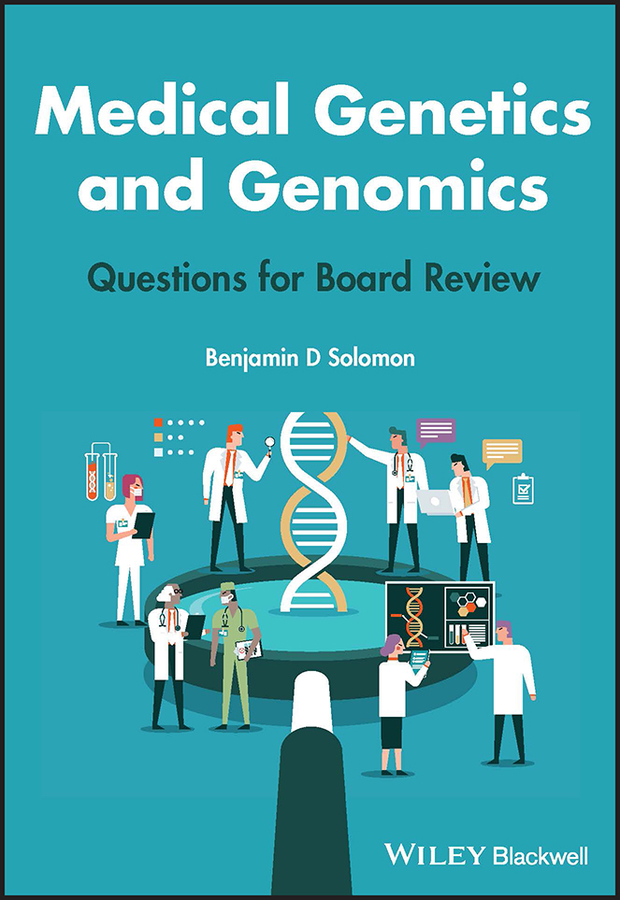
Table of Contents
Guide
Pages
Medical Genetics and Genomics
Questions for Board Review
Benjamin D. Solomon, MD
Pediatrician and Clinical Geneticist

This first edition first published 2023
2023 John Wiley & Sons Ltd
All rights reserved. No part of this publication may be reproduced, stored in a retrieval system, or transmitted, in any form or by any means, electronic, mechanical, photocopying, recording or otherwise, except as permitted by law. Advice on how to obtain permission to reuse material from this title is available at http://www.wiley.com/go/permissions.
The right of Benjamin D. Solomon to be identified as the author of this work has been asserted in accordance with law.
Registered Offices
John Wiley & Sons, Inc., 111 River Street, Hoboken, NJ 07030, USA
John Wiley & Sons Ltd, The Atrium, Southern Gate, Chichester, West Sussex, PO19 8SQ, UK
Editorial Office
9600 Garsington Road, Oxford, OX4 2DQ, UK
For details of our global editorial offices, customer services, and more information about Wiley products visit us at www.wiley.com.
Wiley also publishes its books in a variety of electronic formats and by printondemand. Some content that appears in standard print versions of this book may not be available in other formats.
Limit of Liability/Disclaimer of Warranty
The contents of this work are intended to further general scientific research, understanding, and discussion only and are not intended and should not be relied upon as recommending or promoting scientific method, diagnosis, or treatment by physicians for any particular patient. In view of ongoing research, equipment modifications, changes in governmental regulations, and the constant flow of information relating to the use of medicines, equipment, and devices, the reader is urged to review and evaluate the information provided in the package insert or instructions for each medicine, equipment, or device for, among other things, any changes in the instructions or indication of usage and for added warnings and precautions. While the publisher and authors have used their best efforts in preparing this work, they make no representations or warranties with respect to the accuracy or completeness of the contents of this work and specifically disclaim all warranties, including without limitation any implied warranties of merchantability or fitness for a particular purpose. No warranty may be created or extended by sales representatives, written sales materials or promotional statements for this work. The fact that an organization, website, or product is referred to in this work as a citation and/or potential source of further information does not mean that the publisher and authors endorse the information or services the organization, website, or product may provide or recommendations it may make. This work is sold with the understanding that the publisher is not engaged in rendering professional services. The advice and strategies contained herein may not be suitable for your situation. You should consult with a specialist where appropriate. Further, readers should be aware that websites listed in this work may have changed or disappeared between when this work was written and when it is read. Neither the publisher nor authors shall be liable for any loss of profit or any other commercial damages, including but not limited to special, incidental, consequential, or other damages.
Library of Congress CataloginginPublication Data applied for
Paperback ISBN: 9781119847182
Cover Design: Wiley
Cover Image: sorbetto/Getty Images
Dedication
For my family, who loves genetics.
Introduction
I hope that this book may be of use to many genetics and other medical trainees, including those in various genetics/genomicsbased residencies, fellowships, and genetic counseling training programs. I anticipate that others, such as medical students, clinicians, or laboratorians who may encounter patients with known or suspected genetic conditions, may also benefit. These questions can be used to study for board or other standardized examinations. Trainees may also want to use these questions to brush up before a genetics or related rotation. As genetics and genomics extends into more and more areas of medicine, this knowledge is increasingly relevant to just about every field of medicine, including cardiology, gastroenterology, immunology, neonatology, nephrology, neurology, oncology, ophthalmology, pathology, and rheumatology, to name just a handful.
I also want to briefly mention a few points about the questions assembled here.
First, based on polling colleagues and trainees, I decided to break up the questions into different thematic areas. Certain areas may be more relevant for certain users. For example, the section on physical examination may be particularly useful for clinical geneticist physicians. Many questions might be assigned to multiple areas, however that is, some questions span multiple themes.
Second, the questions cover multiple different areas of genetics. Depending on a persons level of training and experience, some questions may seem laughably easy, while others may be much trickier.
Third, I have tried to keep the questions short and straightforward so that learners would not get tripped up by semantics. This may mean that some questions may not perfectly mirror the style used in examinations, though examination style can differ and change with time and examination type. Although some examinations now shy away from all of the above and similar question formats (despite Mainos excellent song), I have retained a few of these types of questions here, as I feel that they can be useful when studying.
Fourth, related to the above point, I have kept the answers clear and succinct. Rather than exploring at length the reasons why all the choices given in the multiple choice questions are correct or incorrect, I provide a short explanation focusing on the correct answer. Based on my own experience, and from talking to colleagues, I have found that overly long discussions can be somewhat distracting, and bogs learners down when the idea is to expose them to information about many different concepts and conditions.
Finally, I have endeavored to make the information as futureproof as possible so that this book will not quickly become obsolete. Along these lines, the references include many traditional scientific and medical articles and textbooks, as well as online articles and other webbased resources. I anticipate that some of these latter references may change with time, and I encourage readers who want to delve deeper into a particular topic to check the latest literature.
For those looking for new questions after completing this book, you can follow me on Twitter (@BenjaminSolomo2). Best of luck, and thanks for your interest!
Basics and Terminology
- 1.1. Both a child and the childs mother are affected by the same genetic condition, but the child is more severely affected. Which of the following terms best describes this scenario?
- Allelic heterogeneity
- Incomplete penetrance
- Pleiotropy
- Variable expressivity
- 1.2. About how many proteincoding genes are there in the human genome?
- 9000
- 19000
- 90000
- 900000
- 1.3. Which of the following refers to the most common isochromosome in humans?
Next page

